
Ahhhh, Pastis….The sweet scent of anise wafts from the tall heavy-bottomed glasses on our tiny table in Café Gaby. Memories of a subtle licorice flavor laced with fragrant herbs are called forth. Our thirsts on this very warm late August day will soon be quenched.
We arrived in Lourmarin yesterday afternoon and are now sitting in our favorite café, in the heart of this Luberon village, where we will mark the start of our vacation with—what else? —a little pastis. We sit, nestled among locals and tourists, in this lively café where people have come for generations for their pastis.

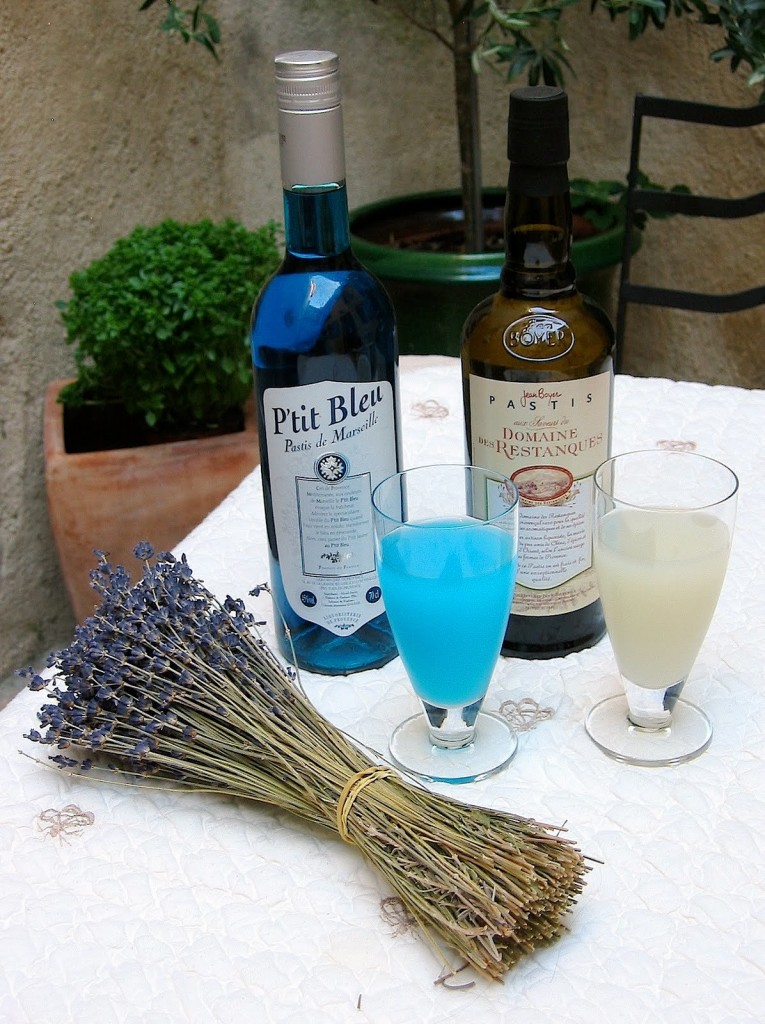
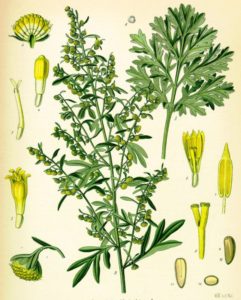
The drink went commercial when Henri-Louis Pernod received the recipe from his father-in-law and, in 1805, opened a distillery in France, near the Swiss border. The drink had a small but loyal following in its native Switzerland, the Netherlands and its new home, France. Its wildly intoxicating effects certainly contributed to its growing popularity–not to mention its nickname la fée verte (the green fairy)—although it was not until the 1860 or so that its popularity really began to take-off. This sudden rise in consumption coincides with the near standstill of French wine production at due to the devastating bug, phylloxera, that infested and destroyed the majority of French vineyards.
By 1890, absinthe was fantastically popular. It was inadvertently promoted by artists and writers like van Gogh, Gauguin, Picasso, Toulouse-Lautrec, Hemmingway and the like who filled the Parisian cafes and drank the stuff. And, it wasn’t long before more ordinary men and women—those who enjoyed the paintings and read the books—were drinking the same drink. That its consumption was so bourgeois can be seen in paintings of that time; but it was not long before its dark side was also recognized and realized in the artwork of other artists, most notably Daumier and Manet.
 In 1915, absinthe was outlawed in France. It is said that it seemed the entire country of France was addicted to the stuff, thus providing the anti-alcohol movement fuel for its prohibition fire but also providing the wine-makers of France a bandwagon to join because an absinthe ban might enable them to regain the market it had lost to absinthe’s popularity. (Other European countries and the United States had banned the drink three years earlier.)
In 1915, absinthe was outlawed in France. It is said that it seemed the entire country of France was addicted to the stuff, thus providing the anti-alcohol movement fuel for its prohibition fire but also providing the wine-makers of France a bandwagon to join because an absinthe ban might enable them to regain the market it had lost to absinthe’s popularity. (Other European countries and the United States had banned the drink three years earlier.)
Wormwood was thought to be the source of the degenerative powers associated with absinthe; but they were, in all likelihood, due to the high alcohol content of absinthe—as high as 170 proof. Wormwood does contain the chemical, thujone, that, in high doses may have hallucinogenic effects; but recent chemical analyses of the absinthes of that time have revealed that the amounts present were too low to have had such effects. If the culprit was not wormwood or alcohol, it may have been the chemicals added by some of the distillers who made absinthe on the cheap.
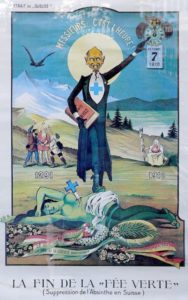
by Albert Gantner, 1910
This was the climate into which pastis was born. Around the same time that Ricard introduced pastis, Pernod—the first producer of absinthe–introduced its own version of an anise-flavored drink with a lowered alcohol content and no wormwood. Although the latter is, by definition “pastis,” Pernod refused to call it anything other than Pernod. Even though Pernod and Ricard merged into one production house in 1974, Pernod is still Pernod and pastis is pastis.
Our favorite pastis is one made by Henri Bardouin, but the most widely served pastis is undoubtedly simply known as “51.” Nowadays, there are a large number of small artisanal producers that put out terrific pastis and, in fact, this article may inspire a little pastis tasting later in the week. Pastis can even be found in blue now, P’tit Bleu, and it is quite good (although the color still throws me).
Our favorite way to drink pastis is on the simple side. Other people like to gussy it up with other alcohols like whisky and gin, or syrups, champagne and even chocolate cookie crumbs.
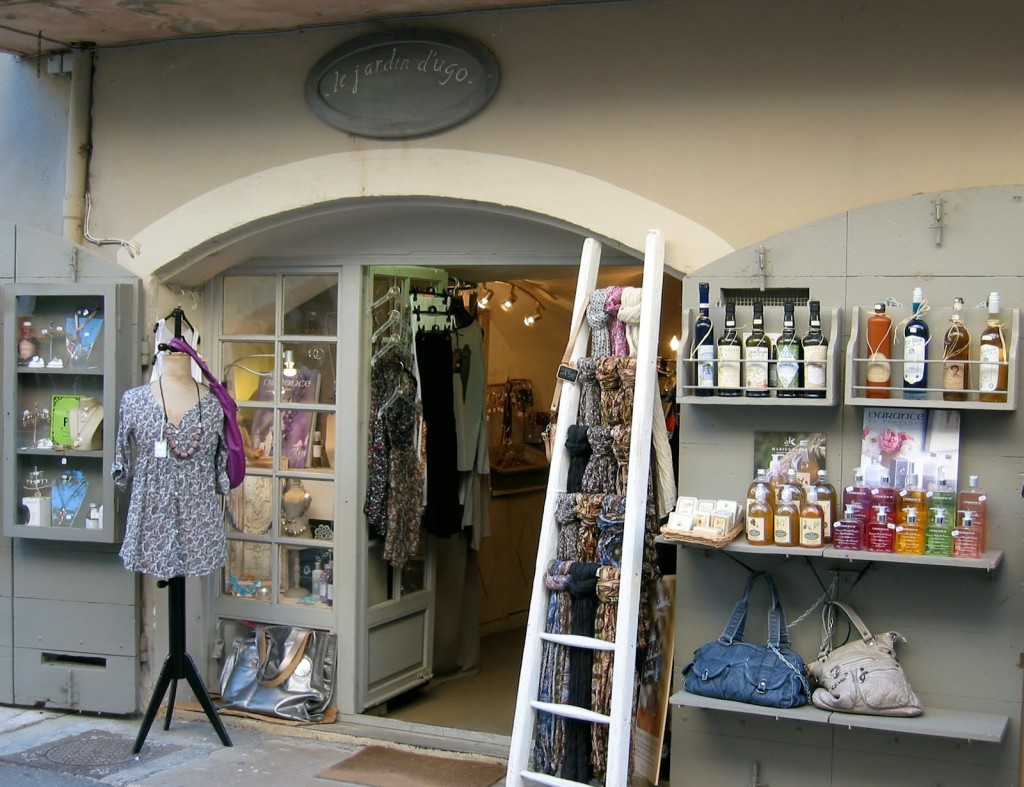
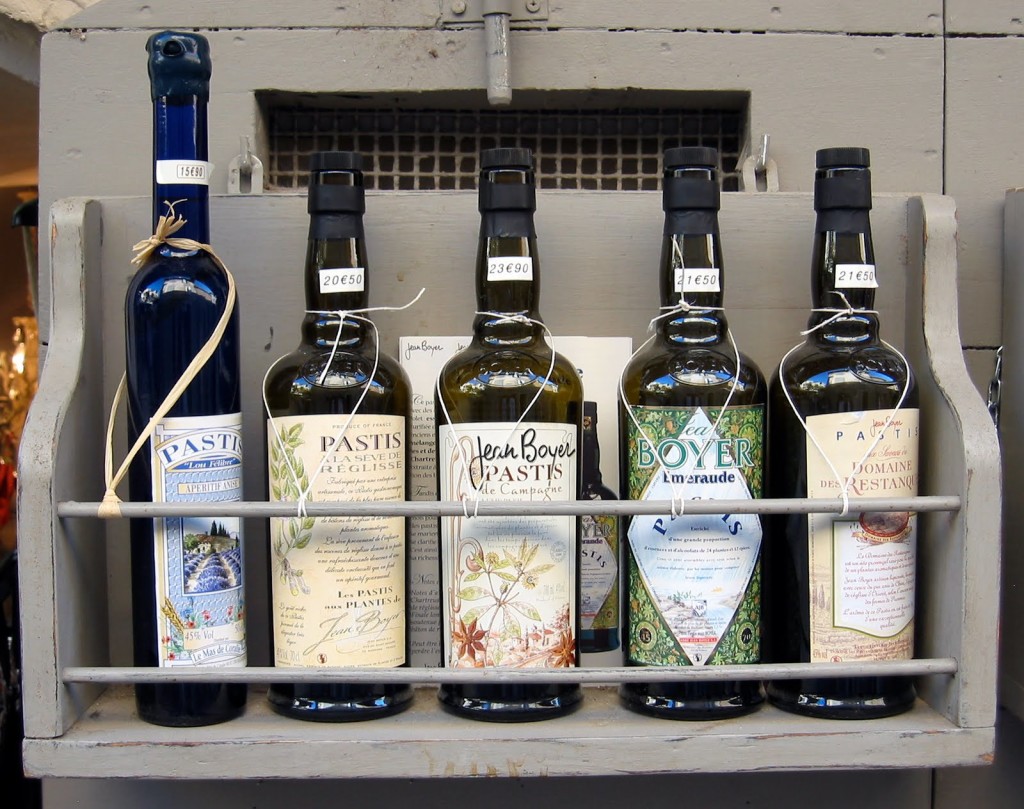
I hope this article inspires you to pick up some pastis before the warm summer evenings fade into fall. And, maybe some absinthe, too—it has been legal again in the States and in Europe for twenty or so years although just in the last few years has there been a resurgence of interest in the drink.
Does it have the notorious wormwood? I can’t seem to find a definitive answer—some sources claim that there is none and others report that there is a small amount. Je ne c’est pas. But, I end this piece with a story that may shed some light on the subject (or, at least, pique your curiosity!).
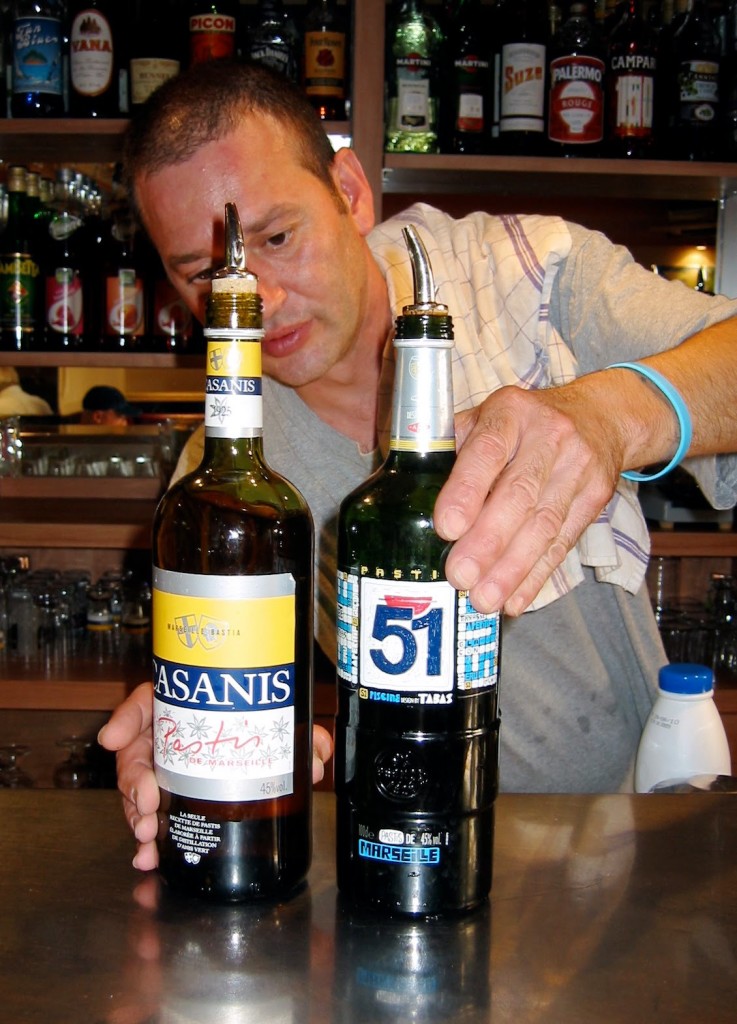
“Funny you should mention absinthe,” my hair stylist, Paul, at TIPS in Boston, said to me just last month. He then told me about recently finding a small bottle I had given him several years ago. He had forgotten the instructions I had given him to prepare it—with water! So, he just poured a glass—straight up! His first impression was, “this stuff is awful” and he promptly re-inserted the cork and jettisoned the bottle into his garbage. Then, he said, “it” hit him and it was a strangest intoxication he had ever had. The next thing he knew, he was fishing threw the garbage for more. (And he asked me to bring a bottle back to him). Maybe the fairy’s wings have not been clipped.







What a wonderful blog. I'm not a licorice fan, but, who knows? I'll have to have some pastis when you return to PLAY SQUASH!!! (I hope you have a chance to play there).
I have enjoyed reading your posts. We subscribe to France magazine in order to receive our "Everything French Fix," however reading your blog truly brings France into our home in a personal and fresh way. I am almost able to smell the lavander and the anise as you share wonders and delights of Provence and Lourmarin.
We enjoy reading "The Modern Trobadors." But we are envious! Just a year ago August 31 we arrived in Lourmarin and had such a lovely stay at La Bonbiennere – your writing brings back great memories – we will return!
Harry, Merci beaucoup pour le bon commentaire! Stay tuned–I hope you will soon feel like you are back in the Lourmarin market! Amities, Susan
Coucou Anonymous Ginny, I will be home soon, carrying sardines, to play squash!
Bonjour Wanda and Dick,
We were at the Cucuron market yesterday. As you know,it is a small but lovely market. We brought home a basket filled with cheeses, wonderful fruits and veggies–the beef steak tomatoes were worthy of a Cezanne painting and the figs were fabulous flavorful–honey, olives, a wine from Chateauneuf-du-Papei, and our favorite rotisseried chicken with pommes des terres supplementaires. It was a dejeuner extraordinaire in the courtyard of La Bonbonniere! Do come back! In the meantime, many thanks for your comments!
Amities,
Susan
Towney & Susan,
You jogged my memory and taste buds to pull out my bottle of Ricard before the summer's over! Hope your holiday is going well. Nothing new to report here on the "home front".
Great newsletter.
Hi Jeff, We look forward to sharing some pastis with you and Janice! Many thanks for your post! Amities, Susan
While still not hooked on drinking Pastis, I have to say that drinking it in the square in Lourmarin is a different story! It tastes just right in situ! I love using it in tomato-based soups, too – lacing each serving with a little as you serve!
Coucou David, Doreen, and Mark,
Will your blog be posting a recipe for a tomato based soup with pastis anytime soon?? Our readers can find wonderful recipes inspired by cuisines from around the world at: http://cocoaandlavender.blogspot.com/
Thank you so much for your post….maybe you just haven't tried the right pastis!
Amities,
Susan
I absolutely can't wait to get to Loumarin and find the place to taste these treats…I have had Pastis and liked it but did not know there were artisanal ones…how does one get it "home"? Must you check a bag to get it on the airplane? or can you ship it reasonably?
Hi Linda,
Le Jardin d'Ugo is just around the corner from La Bonbonniere; there you will find a very good selection of artisinal pastises and absinthes. Nowadays as I know you know, sadly, it does require checking a bag unless you mail it home. I will check on the details of that option and post later…..good question! Merci bien.
Amities,
Susan
Susan and Towny,
I would be really pleased to make my next blog entry the tomato-fennel soup laced with Pastis! It is a lovely summer soup! Check the blog (www.cocoaandlavender.blogspot.com) on the 8th!
A bientot,
David
C'est parti, David and our dear readers…a new expression for us, meaning "we are off and running." I guarantee that David's tomato-fennel soup avec pastis will be a keeper! Amities, Susan